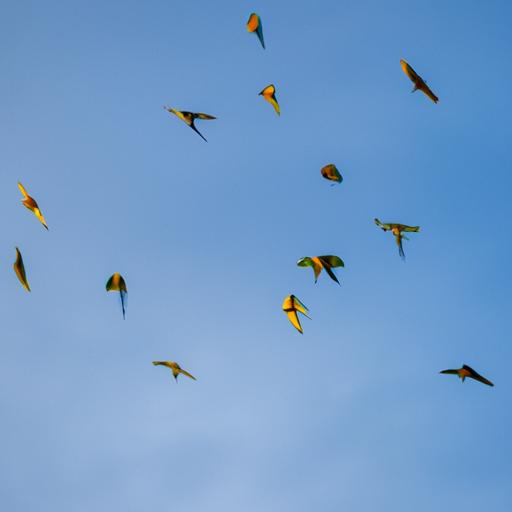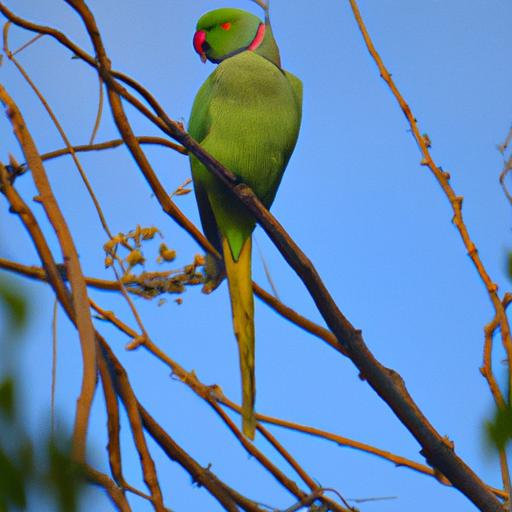When we think of parrots, we often picture these colorful birds perched on trees or repeating words we say. But did you know that many parrot species are endangered? In fact, according to the International Union for Conservation of Nature (IUCN), 30% of parrot species are threatened with extinction. This is why parrot conservation is crucial.
Parrots play a significant role in ecosystems as seed dispersers and pollinators. They also provide economic benefits through ecotourism and the pet trade. However, habitat loss, poaching, and the illegal pet trade have put many parrot species at risk. Without conservation efforts, many parrot species could disappear forever.
In this article, I’ll discuss the importance of parrot conservation, current conservation efforts, challenges in conservation, successful projects, and ways for individuals to get involved. By the end of this article, you’ll have a better understanding of why parrot conservation matters and how you can help protect these beautiful birds.
Threats to Parrot Conservation

Habitat Loss
One of the main threats to parrot conservation is habitat loss. Parrots are found in tropical and subtropical regions around the world, including rainforests, dry forests, and savannas. However, these habitats are being destroyed at an alarming rate due to deforestation, agriculture, and urbanization. As a result, parrots are losing their homes and the resources they need to survive.
Poaching
Another significant threat to parrot conservation is poaching. Parrots are highly sought after for their colorful feathers, which are used in traditional clothing and accessories. They are also popular as pets, which has led to the illegal pet trade. This trade often involves capturing wild parrots and selling them on the black market. The capture and transport of parrots can be extremely stressful and can lead to injury or death. It also reduces the number of parrots in the wild, which can have a significant impact on their populations.
To address these threats, conservation organizations are working to protect parrot habitats, educate communities about the importance of parrot conservation, and crack down on the illegal pet trade. However, there is still much work to be done to ensure that parrots can thrive in the wild.
Current Conservation Efforts

Parrot conservation efforts have been ongoing for several decades, and there are many organizations dedicated to protecting these birds. Here are some current conservation efforts being implemented:
Protected Areas
Protected areas are important for parrot conservation as they provide a safe habitat for parrots to live and breed. Many countries have established national parks and reserves to protect parrot populations. For example, the Tambopata National Reserve in Peru is home to over 80 parrot species and is an important breeding ground for macaws.
Rehabilitation Programs
Rehabilitation programs are designed to help injured or orphaned parrots and release them back into the wild. These programs provide medical care, food, and shelter for parrots until they are ready to be released. Some rehabilitation programs also involve community outreach to educate people about the importance of parrot conservation. For example, the Belize Bird Rescue provides medical care and rehabilitation for injured parrots and also works with local schools to teach children about parrot conservation.
Anti-Poaching Efforts
Poaching is a major threat to parrot populations, and many organizations are working to combat this issue. Anti-poaching efforts involve monitoring parrot populations, tracking poachers, and working with local communities to discourage poaching. For example, the World Parrot Trust has implemented an anti-poaching program in Bolivia that involves working with indigenous communities to protect the threatened blue-throated macaw.
Research and Monitoring
Research and monitoring programs are essential for understanding parrot populations and identifying conservation needs. These programs involve tracking parrot populations, studying their behavior, and monitoring threats such as habitat loss and disease. For example, the Peregrine Fund conducts research on the ecology and behavior of parrots and works with local communities to develop conservation strategies.
Overall, these conservation efforts are crucial for protecting parrots and ensuring their survival. By supporting these programs and organizations, we can help protect these beautiful birds for future generations.
Challenges in Parrot Conservation
Conservation efforts can face various challenges, and parrot conservation is no exception. Some of the main challenges in parrot conservation include:
Lack of Funding
Funding is a crucial aspect of conservation efforts. Unfortunately, many parrot conservation projects are underfunded, making it difficult to implement necessary measures. Without proper funding, it is challenging to conduct research, establish protected areas, and carry out rehabilitation efforts.
Political Will
Political will is also necessary for effective parrot conservation. Governments play a significant role in creating policies and regulations that protect parrot populations and their habitats. However, not all governments prioritize conservation efforts, and some may even oppose them due to economic interests.
Lack of Awareness
Many people are unaware of the threats to parrot populations and the importance of conservation efforts. Education and awareness-raising initiatives are necessary to inform the public and garner support for conservation efforts.
Illegal Trade
The illegal pet trade is a significant threat to parrot populations. Many parrots are captured from the wild and sold as pets, leading to population declines and the spread of diseases. Despite regulations and enforcement efforts, the illegal pet trade continues to thrive.
Habitat Loss
Habitat loss is a significant threat to many species, including parrots. Deforestation, urbanization, and agricultural expansion all contribute to habitat loss, making it difficult for parrots to find suitable habitats and food sources.
To overcome these challenges, collaboration between governments, conservation organizations, and the public is necessary. By raising awareness, providing funding, and implementing policies and regulations, we can help protect parrot populations and their habitats.
Successful Parrot Conservation Projects
Parrot conservation projects have been successful in protecting and recovering endangered parrot species. Here are some examples of successful parrot conservation projects from around the world:
The Spix’s Macaw Conservation Project
The Spix’s Macaw, also known as the “little blue macaw,” is one of the rarest birds in the world and was thought to be extinct in the wild. However, thanks to the efforts of the Spix’s Macaw Conservation Project in Brazil, 166 Spix’s Macaws now live in the wild. The project’s success is due to a combination of habitat restoration, captive breeding, and reintroduction efforts.
The Kakapo Recovery Program
The Kakapo, a flightless parrot native to New Zealand, is critically endangered with only around 200 individuals remaining. The Kakapo Recovery Program, which began in the 1980s, has been successful in increasing the Kakapo population through intensive management, habitat restoration, and predator control. As a result, the Kakapo population has slowly increased, and the species is showing signs of recovery.
The Puerto Rican Parrot Recovery Program
The Puerto Rican Parrot, or Amazona vittata, was once on the brink of extinction with only 13 individuals remaining in the wild. Today, thanks to the Puerto Rican Parrot Recovery Program, the population has increased to over 500 individuals. The program’s success is due to a combination of captive breeding and reintroduction efforts, habitat restoration, and predator control.
These successful parrot conservation projects demonstrate that with the right efforts, it is possible to protect and recover endangered parrot species. By supporting these projects and spreading awareness about parrot conservation, we can help ensure the survival of these beautiful birds for generations to come.
Conclusion
In conclusion, parrot conservation is crucial to protect these beautiful birds from extinction. While there are many challenges in conservation, there are also successful projects and ways for individuals to get involved. By supporting conservation efforts and advocating for parrot protection, we can ensure that these birds continue to play an important role in ecosystems and provide economic benefits.
At Critter Kingdom, we believe in the importance of protecting all animals, including parrots. As a website specializing in dogs, cat breeds, and small animals, we understand the value of biodiversity and the role that animals play in our lives. By raising awareness about parrot conservation, we can make a difference in protecting these amazing birds. So join us in advocating for parrot protection and conservation efforts, and let’s work together to ensure that these beautiful birds continue to thrive for generations to come.

